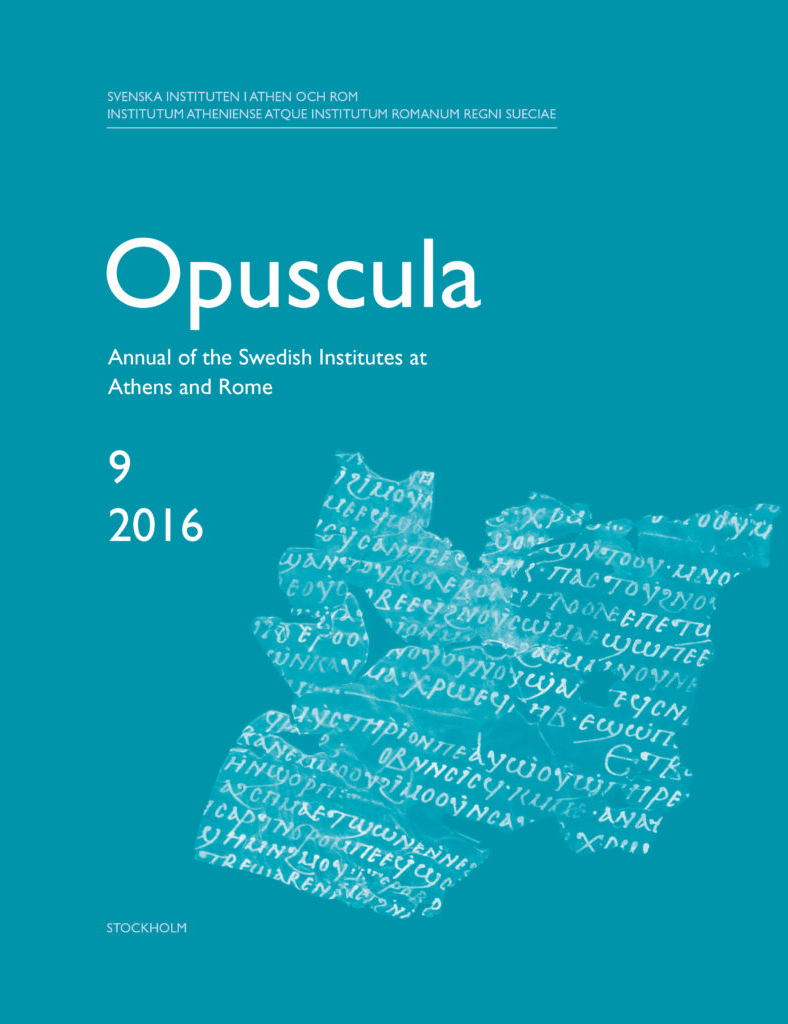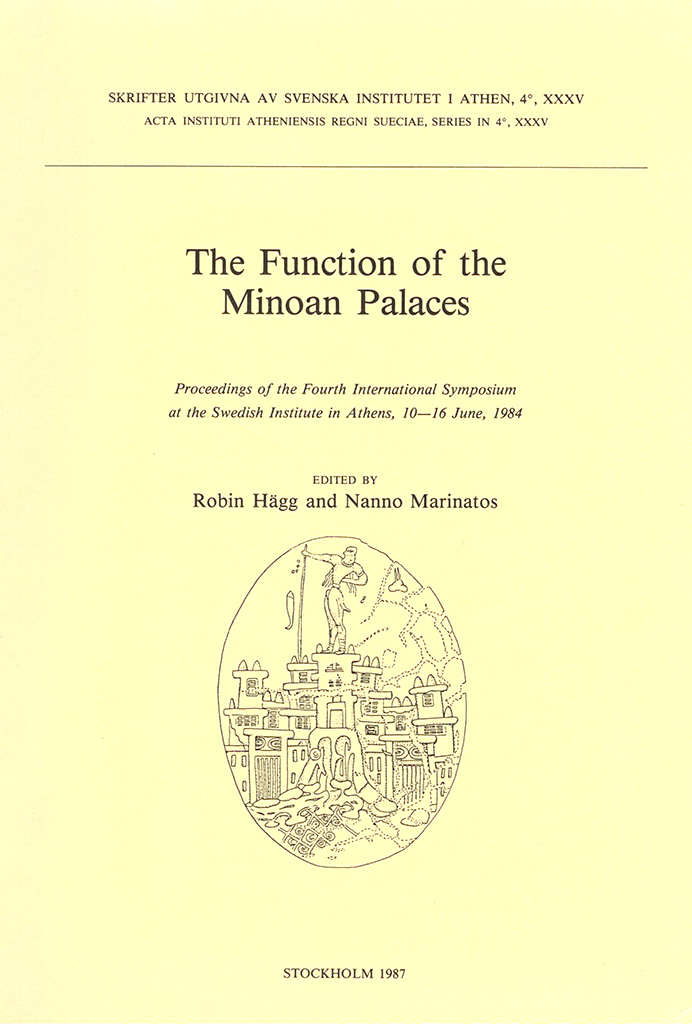Opuscula is published by the Swedish Institutes at Athens and Rome, with the aid of a grant from the Swedish Research Council. Distributed by Eddy.se AB. View journal at ERIH PLUS. All content available with open access. Clay paste characterization and provenance determination of Middle and Late Helladic vessels from Midea By Katie Demakopoulou, Nicoletta Divari-Valakou, Joseph Maran, Hans Mommsen, Susanne Prillwitz & Gisela Walberg Abstract Results of the Neutron Activation Analysis (NAA) of 61 pottery samples of Middle and Late Helladic date from recent excavations in Midea are presented. Chronologically, the sampled pieces fall into two groups, the first of Middle Helladic and Late Helladic I/II, the second of LH III date, with most samples dating to LH IIIB or IIIC. The analyses suggest an Argive/North-eastern Peloponnesian provenance for the majority of the sampled pottery, since 26 of the samples are assigned to the NAA group Mycenae-Berbati (MYBE) and 15 to the NAA group Tiryns (TIR), including their subgroups. In addition to the two main groups the analyses include three other categories: “non-Argive”, unlocated, and singles. The differentiation into a small number of distinct chemical patterns is much more evident in the second chronological group of sampled pottery than…
Opuscula is published by the Swedish Institutes at Athens and Rome, with the aid of a grant from the Swedish Research Council. Distributed by Eddy.se AB. View journal at ERIH PLUS. All content available with open access. Textile tools from the East Gate at Mycenaean Midea, Argolis, Greece By Serena Sabatini Abstract This contribution presents in the first place an analysis and interpretation of all implements and tools possibly related to textile production that were recovered in the East Gate area at Midea during the Greek-Swedish excavation campaigns between 2000 and 2009. Secondly, with the help of comparative evidence from other zones on the citadel of Midea and also from other Mycenaean sites, it is argued that at least one multifunctional unit, where textile manufacture was also carried out, might have existed in the East Gate area. It is also suggested that this textile production comprised fine quality products to a significant extent. Finally, referring to signalling theory it is proposed that the fabrics possibly manufactured in the citadel served as means for the local community or élite to partake in the socio-cultural and political competition which seems to characterize Mycenaean society in general. Bibliographical information Serena Sabatini, ‘Textile tools…
Published by the Swedish Institute at Athens. Distributed by Astrom Editions. The function of the Minoan palaces. Proceedings of the Fourth International Symposium at the Swedish Institute in Athens, 10–16 June, 1984 Edited by Robin Hägg & Nanno Marinatos Abstract Fourty-seven papers on the functions of the palace, the most characteristic phenomenon of the Minoan Bronze Age civilization in Crete, read at an international conference in Athens; the papers are followed by transcripts of the discussion of the symposium. The papers are arranged in eight groups, discussing (1) background (Near Eastern and Egyptian economy), parallels (Mycenaean palaces) and methodology; (2) the emergence of the Cretan palaces; (3) the relations of the palace with town and territory; (4) recent archaeological finds; (5) the palaces as ceremonial and religious centres; (6) the palaces as centres of trade and manufacture; (7) the administrative systems of the Minoans and Mycenaeans; and (8) the function of the frescoes in the palace. For James Walter Graham and to the memory of Spyridon Marinatos. Contents ‘Preface’, p. 9 Background and methodology Benjamin R. Foster, ‘The Late Bronze Age palace economy: A view from the East’, pp. 11–16 Wolfgang Helck, ‘The dissolution of the palace economy in the…



